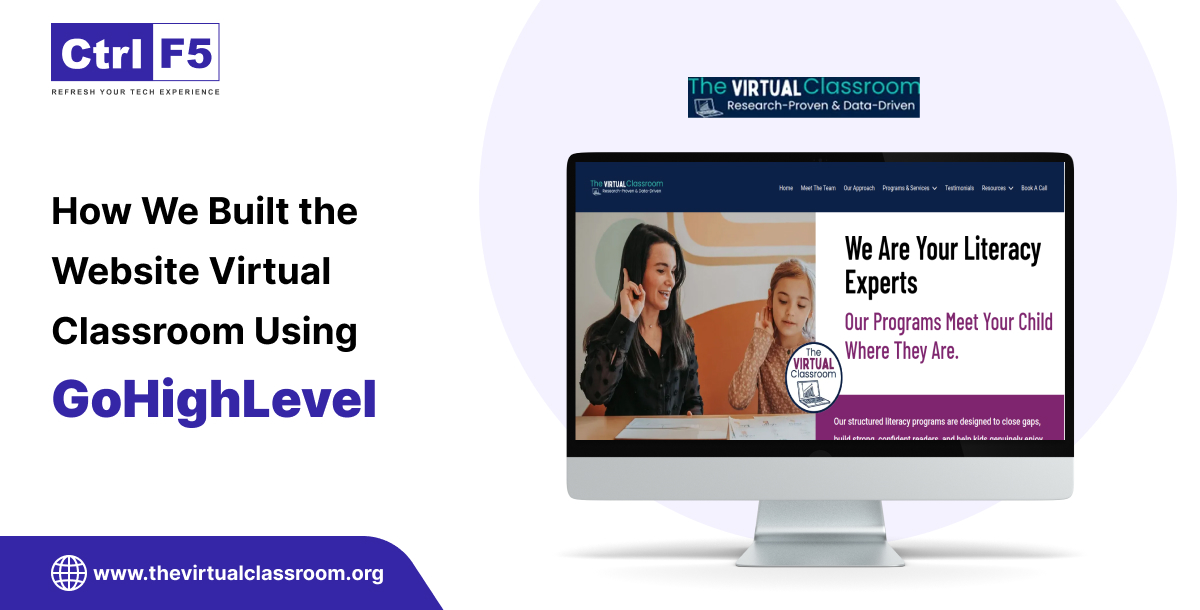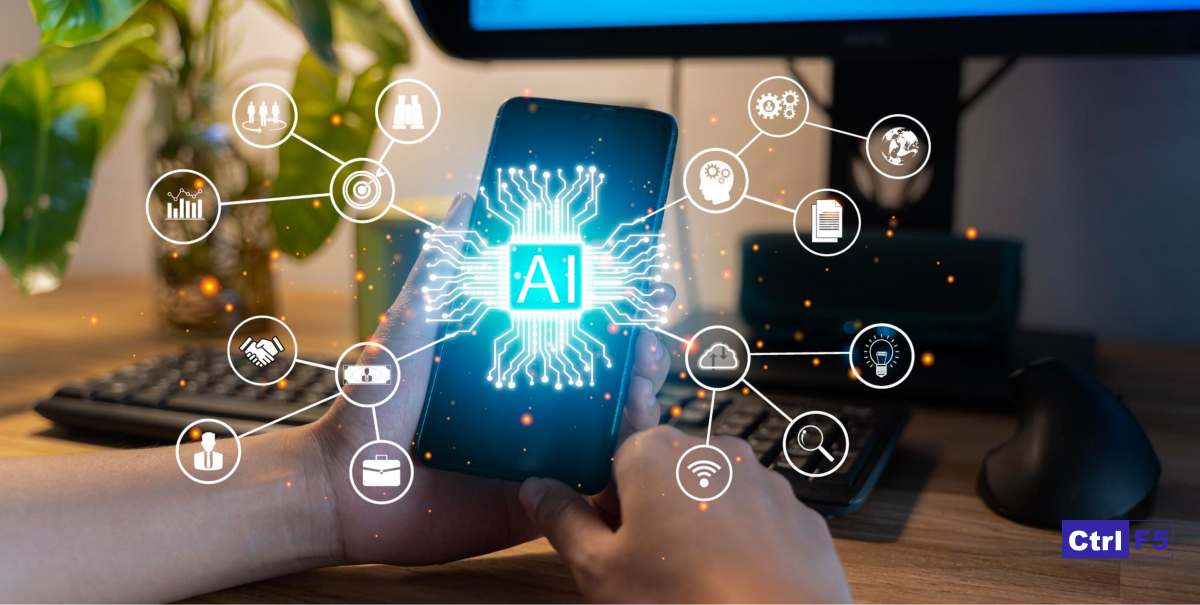
How LLMs Are Transforming AI Apps: Here’s a full guide
- Anurag Pandey
- Last updated on April 17, 2025
- Artificial intelligence, ChatGPT, Mobile Apps
- 11 minutes read
Table of Contents
ToggleArtificial intelligence represents the most significant paradigm shift since the internet’s inception in 1994. And, understandably, many firms are trying to incorporate AI into their business practices. One of the most important ways this is happening is through generative AI and large language models (LLMs), and it goes well beyond simply asking ChatGPT to write a post about a certain topic for a corporate blog or even to assist with code.
Large Language Models (LLMs), the foundation of advanced natural language processing, mark a paradigm change in machine learning. They are trained on large datasets to recognize subtle linguistic patterns and correlations, allowing for a wide range of applications. LLMs are astonishingly versatile, capable of translating many languages and powering sophisticated chatbots alike. They not only understand complicated language but also write cohesive, grammatically correct content.
Consider a chatbot that uses an LLM, it can engage in human-like conversations while accurately interpreting requests and offering informative responses. In this blog, we’ll go over how LLMs are transforming AI mobile apps with their benefits, essential characteristics, steps, examples, and more.
Understanding Large Language Models (LLMs)
Large Language Models (LLMs) are built utilizing deep learning techniques and trained on massive text datasets, allowing them to produce remarkably human-like prose. Compared to simpler models, LLMs have an incredible number of parameters, often in the billions, allowing them to capture rich patterns of speech and variations.
LLMs work by comprehending and predicting word sequences, honing their skills by thorough examination of various text sources such as books, journals, and web pages. This comprehensive training gives them a broad understanding of language, context, and subject matter, allowing them to perform a wide range of NLP tasks, including translation and summarization as well as conversational query responding.
Take ChatGPT’s GPT-3, for example: trained on massive amounts of internet material, it exhibits proficiency in numerous languages and subjects. This allows it to do things like translate documents, summarize content, and engage in fine discourse. These skills are derived from a thorough grasp of language structures and contexts, demonstrating LLMs’ amazing potential for changing our interactions with technology and information.

How LLMs Are Transforming AI Apps
Training Large Language Models (LLMs) is a painstaking and multi-step procedure. GPT-3 and other Large Language Models (LLMs) have revolutionized AI by producing human-like prose on unprecedented scales. Here are several ways LLMs affect AI applications:
Natural Language Understanding (NLU)
LLMs excel at understanding and interpreting natural language, allowing for breakthroughs in NLU applications such as sentiment analysis, text classification, named entity identification, and more. They understand context, tone, and semantics, allowing for more accurate and nuanced interpretations.
Content Generation
LLMs can generate human-like writing in a variety of styles, tones, and domains. This functionality is used for content production jobs including composing articles, product descriptions, creative writing, and even code generation. They can help writers, marketers, and developers create high-quality content efficiently.
Conversational Agents
LLMs boost conversational agents’ and chatbots’ ability to understand user questions, respond appropriately, and participate in meaningful discussions. These agents find use in customer service, virtual assistants, tutoring, and other fields, improving user experiences and interactions.
Language Translation
LLMs are used in machine translation systems to improve translation accuracy and fluency in various languages. They can provide more contextually relevant translations by using massive amounts of multilingual text data, breaking down language barriers, and boosting global collaboration.
Knowledge Retrieval and Summarization
LLMs can sift through vast amounts of textual data to retrieve relevant information and generate concise summaries. They aid in tasks such as information retrieval, document summarization, question answering, and knowledge base construction, enabling efficient data analysis and decision-making.
Personalization and Recommendation Systems
LLMs enable personalized content recommendations by understanding user preferences, behavior, and context from textual data. They power recommendation engines in various platforms such as e-commerce, streaming services, news aggregators, and social media, enhancing user satisfaction and engagement.
You can also level up your e-commerce game with Shopify product recommendation apps for customized user experiences.
Creative Applications
LLMs serve as tools for creativity and exploration in various artistic and design domains. They can assist artists, musicians, and designers in generating ideas, creating content, and exploring new concepts in fields like art generation, music composition, and graphic design.
Research and Development
LLMs facilitate research and development in AI by providing accessible tools for experimenting with natural language processing tasks. Researchers leverage pre-trained models like GPT-3 as building blocks for developing novel algorithms, exploring new applications, and advancing the state-of-the-art in AI.
Overall, LLMs are driving significant advancements across AI applications by revolutionizing how machines understand, generate, and interact with natural language, paving the way for more intelligent and versatile AI systems.

What are the Advantages of Large Language Models?
Large language models offer enormous promise for organizations. This makes LLM an invaluable tool for businesses that generate vast amounts of data. Here are some of the advantages of LLMs.
1. Advanced NLP Capabilities
Natural language processing helps AI robots understand texts and spoken speech in the same manner that humans do. Before LLM, firms employed a variety of machine learning algorithms to train machines to interpret human text. However, the introduction of LLMs like GPT-3.5 has simplified the process. It has improved AI-powered robots’ ability to interpret human messages more quickly and accurately. ChatGPT and Gemini are excellent examples of this.
2. Improved Generative Capabilities
Creating unique ChatGPT business can catch the attention of business leaders across industries—the conversational capability of the tool being the highlight. The AI-powered application machines’ conversational ability is all due to LLM. The language learning model possesses a powerful generative ability that analyzes large amounts of data and information and provides insight. These insights can be used to enhance human and machine interaction and provide accurate results for prompts.
3. Increased Efficiency
LLMs can understand human language, making them excellent for performing repetitive or labor-intensive activities. For example, finance professionals can use LLMs to automate financial operations and data processing, minimizing the need for manual labor. One of the reasons LLMs have grown vital in organizations is their capacity to boost productivity through work automation.
4. Language Translation
Large language models can be used to translate text between languages. The model uses deep learning algorithms like recurrent neural networks to learn the language structure of two different languages. Hence, facilitating easy cross-cultural communication and breaking down language barriers.
How are Large Language Models Trained?
Training Large Language Models (LLMs) is a painstaking and multi-step procedure. Each step is critical to ensuring that the final LLM is not only powerful in processing language but also adaptive and accurate in its applications.
- Data Collection: The core of LLM training is the collection of a large and diverse dataset. For example, GPT-3 training entailed gathering text from books, websites, and other sources to ensure a diverse range of language styles and themes.
- Tokenization: This stage divides the text into smaller units, such as words or subwords. Consider breaking down phrases into individual words or sections of words to better comprehend their structure and usage.
- Pre-processing: Here, the obtained data is cleaned and sorted. This could include eliminating extraneous content or standardizing text formats to ensure the model learns from high-quality input.
- Model Architecture Design: Designing the model’s structure is critical. For LLMs such as Gemini or GPT, this entails selecting a neural network design, typically a transformer model, which is noted for its efficacy in handling sequential data.
- Embedding Layer: This layer translates tokens to numerical vectors. Each word or token is assigned a unique vector expressing its meaning in a multidimensional space.
- Pre-training on a Language Corpus: The model is initially trained on a large linguistic corpus. This stage assists the model in comprehending linguistic patterns and context. It’s like teaching the fundamentals of a language before specializing in a certain topic.
- Fine-tuning for Specific Tasks: Following general training, LLMs are fine-tuned using targeted datasets. Legal texts are used to polish their knowledge of legal vocabulary and document analysis for legal applications.
- Validation and Hyperparameter Tuning: This step entails tweaking the model’s parameters and testing its performance on a different dataset. It is critical for improving the model’s accuracy and efficiency, ensuring that it performs properly.
- Evaluation: LLMs are thoroughly evaluated using a variety of metrics. This extensive testing is required to ensure that they achieve high standards of accuracy and relevance in their applications.
- Deployment: Once fully trained and validated, LLMs are used in practical applications such as powering chatbots, translating languages, or creating creative content, where their sophisticated language skills are put to use in real-world situations.
- Continuous Monitoring and Updating: Continuous monitoring after deployment is required to guarantee that the model is still effective and up to date. Regular revisions may be required to include new data or respond to language changes.

What could be some real-world applications for large language models?
The broad language model has transformed the way businesses operate in the digital age. LLM’s most exciting application cases include legal and financial analysis, market research, content development, and a customer support system. You can also hire ChatGPT experts as an ideal example, as it automate business operations such as writing, scripting, and research. Here are some real-world applications for LLMs.
1. Search
LLMs can help to improve the user’s search experience. It gives users relevant and accurate information. Interestingly, the new-age Bing, which debuted in 2023, employs LLMs to improve search results. Traditional search engines rely on keyword-based algorithms to present consumers with relevant results. However, with LLMs, search engines can better grasp users’ intent and provide relevant search results.
2. Generate, Write, and Edit Content
ChatGPT initially attracted the attention of the writing community due to its ability to generate content faster than humans. The Economic Times described ChatGPT as an effective writing tool. It identified several ways that writers can benefit from the LLM-based paradigm.
- Assist in idea generation
- Make keyword search easier and quicker
- Proofread and edited content
- Provide research material at the tip of the finger
Key Characteristics of Large Language Models
1. Scale and Size: LLMs are massive in terms of parameters, frequently numbering in the billions. This huge scale enables them to process and comprehend complicated linguistic structures, making them particularly effective in language-processing tasks.
2. Pre-training Dynamics: LLMs are extensively pre-trained on various datasets. This training prepares kids to understand a variety of linguistic patterns and settings, laying the groundwork for their advanced talents.
3. Transfer Learning: LLMs thrive in applying previously learned knowledge to new, unfamiliar tasks. This ability to transfer learning makes them adaptable and productive in a variety of contexts.
4. Contextual Understanding: LLMs have an exceptional ability to grasp and hold context throughout lengthy passages of material. This ensures coherent and relevant responses during discussions or text generation.
5. Versatility in Applications: LLMs are not limited to a single application. They are adaptive to a variety of jobs, including translation, content generation, and even complicated problem-solving.
6. Fine-tuning Capabilities: LLMs can be fine-tuned with specific datasets to enhance performance in particular domains, making them highly customizable.
7. Transferability of Knowledge: Once trained, these models can apply their knowledge to a variety of languages and circumstances. This feature increases their usefulness in multilingual applications and a variety of information forms, demonstrating their adaptability and vast scope.
8. Effective Context Maintenance: LLMs effectively preserve context during lengthy discussions or messages, which is critical for coherent and meaningful relationships.
9. Adaptive Learning: This demonstrates their ability to adapt to new knowledge and language trends. This ongoing learning keeps them current and relevant, allowing them to efficiently adapt to changing language use, emergent terminology, and growing communication styles.
10. Ability to Learn and Generate Creative Content: LLMs can not only learn from current content but also create new, creative works, such as writing stories or composing music.
A final word on How LLMs Are Transforming AI Apps
In conclusion, Large Language Models (LLMs) are transforming AI applications in a variety of disciplines. Their remarkable ability to interpret and generate human-like text on a large scale improves natural language understanding, content generation, conversational agents, translation, and other applications. LLMs are transforming the AI environment by powering personalized experiences, increasing information retrieval, and encouraging creativity, allowing for more intelligent and diverse applications. For expert assistance and consultation on harnessing the power of LLMs, you can freely contact us to explore the possibilities further.
Anurag Pandey
I’m Anurag Pandey, Founder & CEO of ControlF5, with 17+ years of experience in building eCommerce solutions, web design, and mobile applications. I specialize in WordPress website design, Shopify store development, and scalable mobile apps based on growing digital brands. My work merges performance-focused UI/UX with advanced integrations, delivering optimized, conversion-ready solutions. At ControlF5, we help eCommerce businesses scale through custom storefronts, mobile-first design, and smooth technology adoption—whether on Shopify, WooCommerce, or native mobile apps. My passion is helping eCommerce brands turn digital ideas into high-performing, user-centric products.
Recent Posts
Categories
Artificial intelligence, ChatGPT, Awards, Case Studies, CSS, eCommerce, Events, Go High Level, How To Guide, HTML, IT Augmentation Service, MERN Developer, Mobile Apps, Android, iOS, MVP, React Js, Remote Developers, SaaS, Shopify, Shopify Apps, Shopify Plus, Uncategorised, Website Design, Woocommerce, WordPress
Hire Developers
About us
ControlF5 has become a leading Web Design and Mobile app Development company in India since 2012, and has a renowned name in the industry.
Popular Posts
Tags
AI
Artificial Intelligence
b2b ecommerce solution provider
best ecommerce platform
best ecommerce website builder
best ecommerce website builder Shopify
best Shopify apps
ControlF5
E-commerce
eCommerce
eCommerce Development
ecommerce website builder
ecommerce website using Shopify
Entrepreneurship
future of WordPress
GoHighLevel
Gutenberg
Hire Remote Developers
Hire Shopify Developers
Hire Shopify Experts
Hire Wordpress Developers
Mobile App Design
Mobile App Development
OpenAI
SEO
set up shopify store
Shopify
shopify case studies
shopify developers
shopify development
shopify dropshipping
shopify experts
shopify plus
shopify store
shopify website builder
Technology
User Experience
web development
website
Website Design
WooCommerce
Wordpress
WordPress developers
wordpress development
wordpress experts
Related Articles
Top Mobile App Development Companies in India
Anurag Pandey
27th June 2025
The mobile app you launch today might be the reason your business grows faster tomorrow. But building a great mobile app isn’t just about coding; it’s about working with the right team.
How to Build a Mobile Fashion App Like Shein 2025
Anurag Pandey
14th May 2025
Online shopping has transformed the way we buy fashion such as clothes, accessories, and footwear, bringing the latest trends to our fingertips with just a few clicks.
Implementing Responsive Design in Flutter for E-Commerce Mobile Apps
Anurag Pandey
9th May 2025
The technology landscape is constantly evolving, with new trends emerging rapidly. People use various devices, including desktops, mobiles, and tablets, to access websites and mobile apps.











